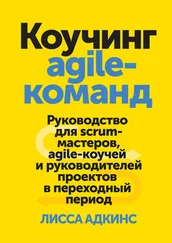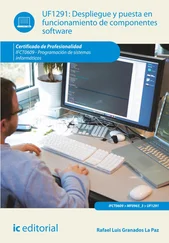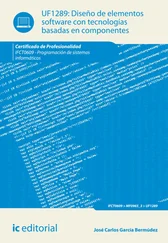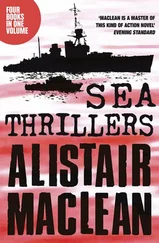Knowing this permits a person to more easily detect the crossover from value adding to diminishing returns, to hit the point of being sufficient-to-purpose. That point has been nicknamed "satisficing" (Simon 1987, Bach URL).
Sufficiency for the Primary Goal
Intermediate work products are not important as models of reality, nor do they have intrinsic value. They have value only as they help the team make a move in the game. Thus, there is no idea to measure intermediate work products for completeness or perfection. An intermediate work product is to be measured for sufficiency: Is it sufficient to remind or inspire the involved group?
These three short stories illustrate how quickly sufficiency can be reached: Sufficiency in a Meeting
On a project called "Winifred" (Cockburn, 1998), I was asked partway through the project to review, for the approximately 40 people on the project, the process we were following and to show samples of the work products. The meeting would be held in the cafeteria. I copied onto overhead transparencies a sample of each work product: a use case, a sequence chart, a class diagram, a screen definition, a fragment of Smalltalk code, and so on.
As luck would have it, the overhead projector bulb blew out just before my little presentation. As I was wearing a white shirt that day, I asked everyone to move closer and held up the sample use case in front of my shirt. "I can't read it!" someone called out, not too surprisingly, from the back. "You don't need to read it," I said. (The group laughed.) "All you need to see is that a use case is paragraphs of text, approximately like this. There are lots of them online for you to look at. We write them as requirements, ..." and I described who was writing them, who was reading them, and how they were being used. I held a sample class diagram in front of my shirt.
"I can't read it!" someone called out again. "You don't need to read it." (The group laughed again.) "All you need to see is that it is a diagram with boxes and lines. It is written by ..." and I discussed the role of the class diagram in the project.
I went through the work products this way. In each case, all that the group needed was a visual image of what one of these things looked liked, who wrote it, who read it, and how it served the project. Real examples were all online and could be examined by anyone on the project.
This was communication sufficient to the purpose that people could have a visual memory of what each product looked like, to anchor the sentences about how they were used.
We did have a drawing showing the process we were following, but as far as I know, nobody other than the project managers and I ever looked at it. Sufficiency of work Products
Project "Winifred" project was a fixed-time, fixed-price project costing about $15 million, lasting 18 months, with 24 programmers among 45 people total. We ran it with the cooperative game principle in mind (the principle hadn't been defined back then, but we knew what we wanted), with as much close, informal communication as possible. At the time use cases weren't very well defined, and so the writers wrote just a few paragraphs of simple prose describing what was supposed to take place, and some of the business rules involved.
The analyst responsible for a use case usually went straight from each meeting with the end users to visit the designer-programmers, telling them the outcome of the meeting. The designer-programmers put their new knowledge directly into their programs, based on the verbal description.
This worked effectively, because the time delay from the analyst's hearing the information in the meeting to the programmer's knowing of its effect on the program was just a matter of hours.
There was an odd side effect, however. Halfway through the project, one of the programming leads commented that he didn't know what purpose the use cases were supposed to serve: They certainly weren't requirements, he said, because he had never read them.
The point of the story is that the casual use cases were "sufficient to the task" of holding the requirements in place. The communication channels and the shared understanding between the writers and readers was rich enough to carry the information. Chrysler's Ultralight Sufficiency
Chrysler's Comprehensive Compensation project (C3 1998) ran even lighter than project Winifred. The ten programmers sat together in a single, enormous room, and the team tracker and three customers (requirements experts) sat in the next room, with no door between them. With excellent intra-team communications and requirements available continuously, the group wrote even less than casual use cases. They wrote a few sentences on an index card for each needed system behavior. They called these "user stories."
When it came time to start on a user story, the programmers involved asked the customer to explain what was needed and then designed that. Whenever they needed more information, they asked the nearby customer to explain. The requirements lived in the discussion between the participants and were archived in the acceptance and unit test suites. The design documentation also lived in a mostly oral tradition within the group. The designers invented new designs using CRC card sessions (Wilkinson 1995). In a CRC-card design session, the designers write the names of potential classes on index cards and then move them around to illustrate the system performing its tasks. The cards serve both to incite new thoughts and to hold in place the discussion so far. CRC cards are easy to construct, to put aside, to bring back into play, and are thus perfectly suited for an evolving game of invention and communication.
After sketching out a possible design with the cards, the designers moved to the workstations and wrote program matching the design, delivering a small bit of system function.
The design was never written down. It lived in the cards, in memories of the conversations surrounding the cards, in the unit tests written to capture the detailed requirements, in the code, and in the shared memories of the people who had worked together on a rotating basis during the design's development.
This was a group highly attuned to the cooperative game principle. Their intermediate work products, while radically minimalist, were quite evidently sufficient to the task of developing the software. The team delivered new function every three weeks over a three-year period.
Sufficiency in the Residue
Thus far, the topic of discussion has been the primary goal of the game: delivering working software. However, the entire project is just one move within a larger game. The project has two goals: to deliver the software and to create an advantageous position for the next game, which is either altering or replacing the system or creating a neighboring system.
If the team fails to meet the primary goal, there may be no next game, and so that goal must be protected first. If the team reaches the primary goal but does a poor job of setting up for the next game, they jeopardize that game.
In most cases, therefore, the teams should create some markers to inform the next team about the system's requirements and design. In keeping with Naur's programming as theory building and the cooperative game principle, these markers should be constructed to get the next team of people reasonably close to the thinking of the team members who completed the previous system. Everything about language games, touching into shared experience, and sufficiency-to-purpose still applies.
The compelling question now becomes this: When does the team construct these additional work products?
One naive answer is to say, "As the work products are created." Another is to say, "At the very end." Neither is optimal. If the requirements or designs change frequently, then it costs a great deal to constantly regenerate them—often, the cost is high enough to jeopardize the project itself. On the other hand, if constructing markers for the future is left to the very end of the project, there is great danger that they will never get created at all. Here are two project stories that illustrate: Continuous Redocumentation
Читать дальше










